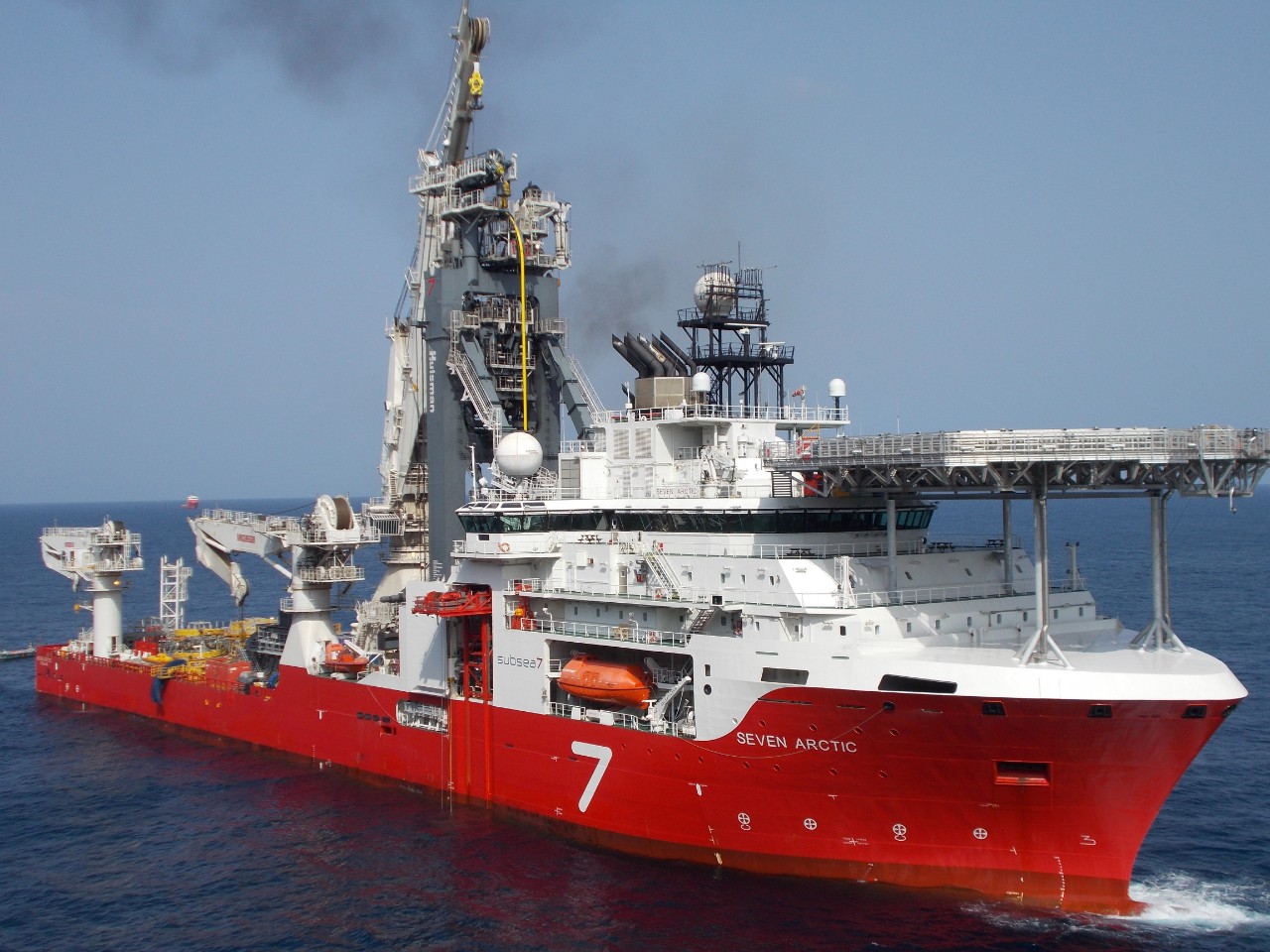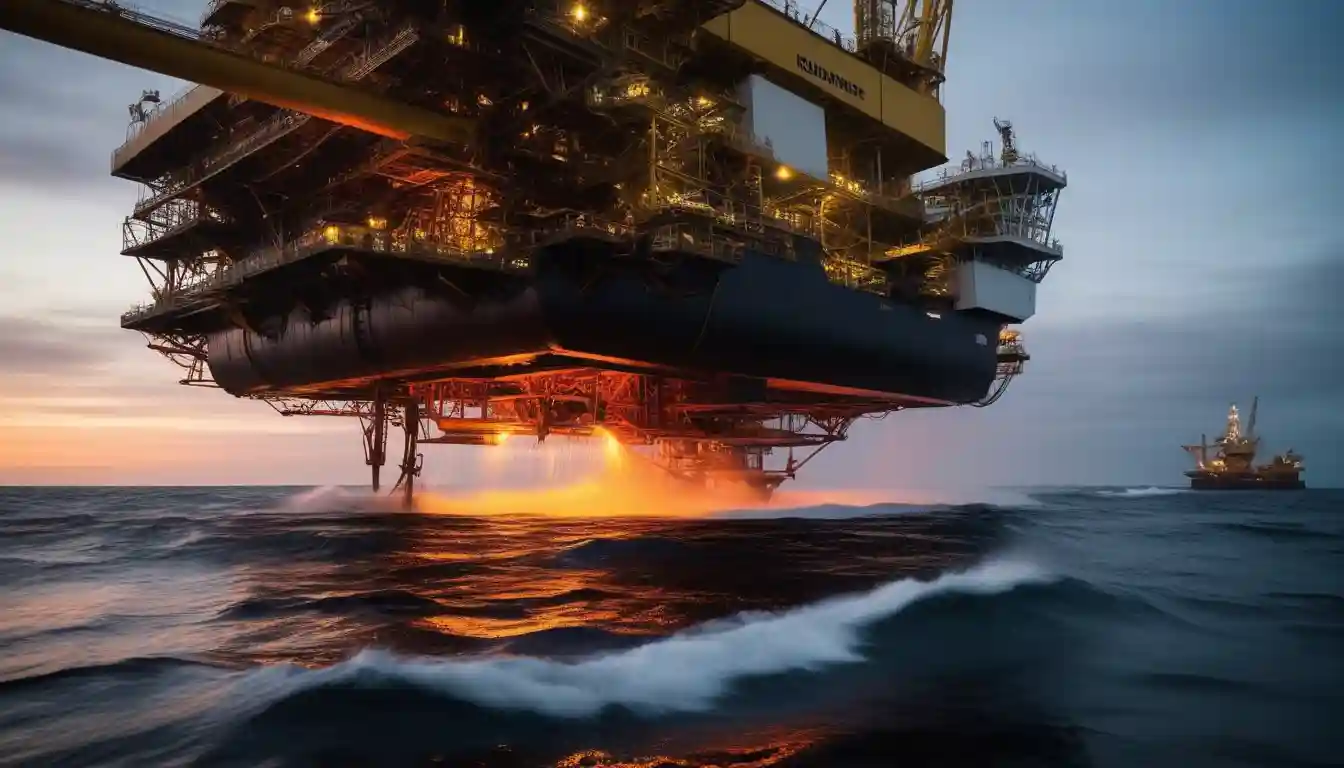Beneath the Waves: Subsea7's Norwegian Contract Signals North Sea's Resilient Future
In the frigid waters of the North Sea, where innovation meets necessity, a significant vote of confidence has emerged for the offshore energy sector. Luxembourg-based Subsea7 announced today it secured a contract valued between $300 million and $500 million from energy giant Equinor for the Fram Sør development project off Norway's coastline.
The contract, classified as "large" in industry parlance, represents more than just another business transaction in the complex web of offshore energy development. It signals continued faith in North Sea production despite global energy transition pressures and showcases how strategic partnerships and early engineering engagement are reshaping project economics in challenging waters.

Norwegian Depths: Engineering Marvel Takes Shape
The scope of work reads like a subsea engineer's dream: 53 kilometers of intricate production, gas lift, and water injection lines snaking across the seabed, complemented by subsea structures and umbilical systems. These complex installations will connect the Fram Sør area—located 10-30 kilometers north of Equinor's Troll C platform and approximately 70 kilometers northwest of Bergen—to existing infrastructure.
"This award continues our long-standing collaboration with Equinor," noted Erik Femsteinevik, Vice President for Subsea7 Norway. "The FEED study enabled Subsea7 to engage early in the field development process, optimizing design solutions and contributing to the final investment decision."
What sets this project apart is its strategic approach to field development. Rather than constructing entirely new production facilities, Fram Sør will tie into Equinor's existing Troll C platform—a host facility powered from shore—ensuring low-emission operations of approximately 0.5 kg CO₂ per barrel of oil equivalent. This approach not only reduces capital expenditure but significantly shrinks the project's carbon footprint.
Tieback Trend: Maximizing Mature Infrastructure
Industry watchers see Fram Sør as emblematic of a broader shift in offshore development strategy. With recoverable resources estimated at 116 million barrels of oil equivalent, the project exemplifies how operators are extending the productive life of mature basins through strategic tiebacks rather than greenfield megaprojects.
"The North Sea is witnessing a renaissance through these sophisticated tieback projects," explained an industry analyst who specializes in offshore developments. "Companies are effectively threading the needle between maintaining production levels and managing capital discipline in an era of heightened environmental scrutiny."
The NOK 21 billion ($2 billion) investment is expected to generate approximately 4,500 full-time equivalent jobs during development, with more than half of procurement directed to Norwegian suppliers—a significant economic injection into domestic supply chains that ensures continued political support for offshore development.
Market Waves: Subsea Sector Rides High
For Subsea7, the contract adds to an already robust backlog of $10.8 billion reported at the end of Q1 2025, with $4.8 billion slated for execution this year alone. The company has projected 2025 revenues between $6.8 billion and $7.2 billion, with margins expected to improve above 20% by 2026 as larger awards like Fram Sør enter their execution phase.
The award reflects strength in the broader offshore engineering, procurement, construction, and installation market. Global offshore oil and gas EPC contracting is forecast to reach $54 billion in 2025, demonstrating remarkable resilience despite decarbonization headwinds.
The subsea flowlines segment—central to tieback projects like Fram Sør—was valued at $2.4 billion in 2024 and is projected to grow at a 6.8% compound annual growth rate through 2034, according to industry data.
"While headlines focus on energy transition, capital continues flowing into strategic offshore hydrocarbon developments," noted a market strategist familiar with the sector. "The ability to leverage existing platforms is proving to be the smart play for both operators and service providers in the current environment."
Strategic Currents: Early Engagement Pays Dividends
Subsea7's success with Fram Sør highlights the growing importance of early contractor engagement through front-end engineering and design studies. The company had been awarded the FEED contract for this project on January 9, 2025, giving it crucial input into the development's technical definition.
This integrated FEED-to-EPCI model enables cost optimization, schedule certainty, and deeper collaboration—advantages that have become increasingly valuable as operators navigate inflation and resource constraints.
Offshore installation activities for Fram Sør are scheduled across 2026, 2027, and 2028, with engineering and project management beginning immediately in Subsea7's offices in Norway and the UK. The contract remains subject to authority approval of the Plan for Development and Operations.
Competitive Waters: Consolidation Reshapes Landscape
Subsea7's contract win comes amid significant shifts in the competitive landscape. The pending merger with Italian rival Saipem—creating "Saipem7" with a combined backlog of €43 billion—promises fleet optimization, unified procurement, and cost-saving synergies of €300 million annually.
Other major players are similarly positioned for growth. TechnipFMC reported a record backlog of $15.8 billion in Q1 2025, driven by a 1.4x subsea book-to-bill ratio and a $26 billion opportunity pipeline. DeepOcean ended 2024 with its highest-ever order backlog of $1.071 billion, leveraging its inspection, maintenance, and repair credentials alongside recycling and offshore wind capabilities.
Investment Horizon: Navigating the North Sea Opportunity
For investors eyeing the subsea sector, several factors merit consideration. Companies with integrated service offerings and early engagement models appear well-positioned to capture value in the current market environment. The emphasis on brownfield developments and tiebacks creates opportunities for players with strong execution capabilities and technological differentiation.
Firms balancing traditional oil and gas work with renewable energy projects may offer attractive growth profiles. Subsea7's wind segment revenue increased 37% in Q1 2025, demonstrating the potential for diversification while maintaining core profitability from conventional energy projects.
"The most compelling investment cases combine strong backlog visibility with margin expansion potential," suggested a senior portfolio manager specializing in energy services. "Companies that can navigate the dual challenges of cost inflation and decarbonization pressures while maintaining operational excellence will likely command premium valuations."
Investment Thesis
| Category | Key Details |
|---|---|
| Contract Award | Subsea7 awarded a "large" ($300–500M) EPCI contract by Equinor for Fram Sør development, reinforcing its North Sea leadership. |
| Market Context | Global offshore EPC contracts to reach $54B in 2025; subsea flowlines market at $2.4B (2024), growing at 6.8% CAGR through 2034. |
| Subsea7 Financials | Backlog: $10.8B (Q1 2025), with $4.8B for 2025 execution. Revenue guidance: $6.8–7.2B (2025), margins expected to exceed 20% in 2026. |
| Fram Sør Scope | EPCI of subsea structures, 53 km flowlines, umbilicals (2026–2028). Ties into Troll C, low-emission (0.5 kg CO₂/BOE), 116M BOE recoverable. |
| Local Impact | NOK 21B ($2B) investment, 4,500 FTE jobs, >50% procurement to Norwegian suppliers. |
| Opportunities | ESG appeal, brownfield efficiency, high backlog visibility, FEED-to-EPCI model for cost control. |
| Risks | Supply-chain inflation, PDO approval delays, oil price volatility, skilled labor shortages. |
| Competitors | Saipem (€32.7B backlog), TechnipFMC ($15.8B backlog), DeepOcean ($1.07B backlog), Aker Solutions. |
| Strategic Implications | Early contractor engagement (ECE) critical; pending Saipem merger (€43B backlog, $300M/yr synergies). |
| Outlook | Backlog to exceed $11B by 2025, margins 18–20% by 2026; brownfield dominance, cost discipline, ESG focus. |
Investors should note that past performance does not guarantee future results. The subsea sector remains exposed to oil price volatility, regulatory delays, and execution risks. Consultation with financial advisors is recommended before making investment decisions based on industry trends.
As Fram Sør awaits final regulatory approval, it stands as a testament to the enduring appeal of North Sea development when approached with innovation, collaboration, and environmental consciousness. For Subsea7 and its peers, the path forward may lie in continuing to perfect the art of maximizing returns from existing infrastructure while gradually expanding their renewable energy capabilities—a balancing act that mirrors the broader energy transition itself.
